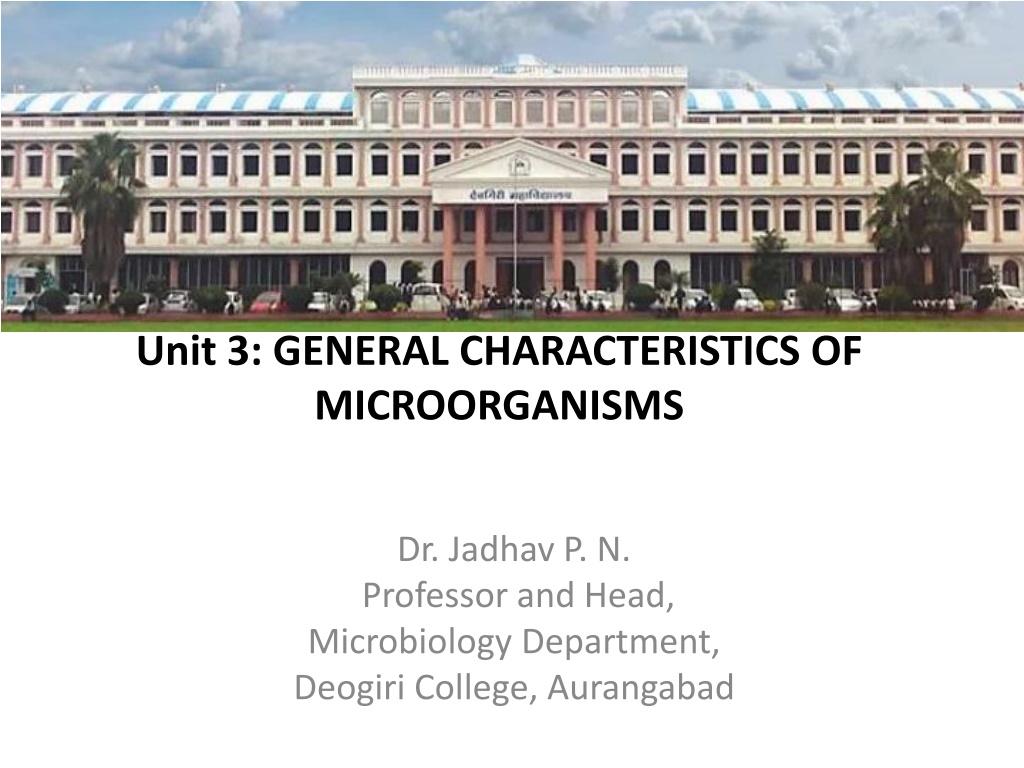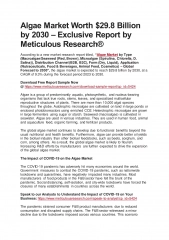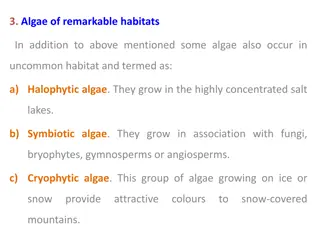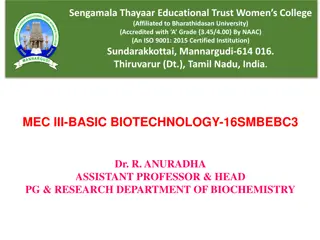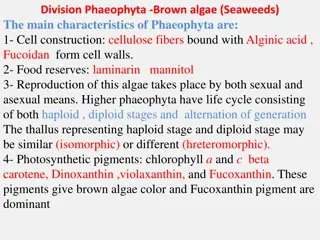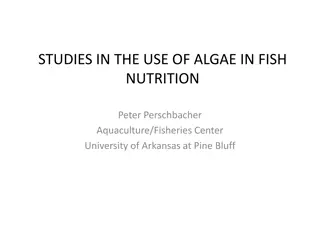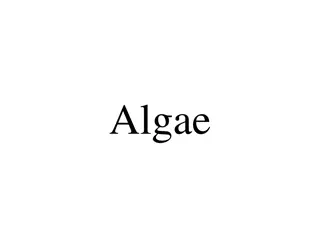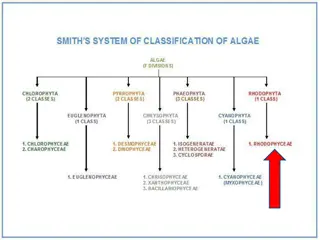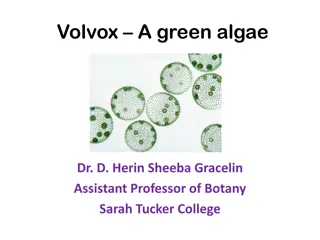Exploring the Fascinating World of Algae: Characteristics, Types, and Applications
Delve into the intriguing realm of algae, from their general characteristics to the various types such as Diatoms, Green Algae, Blue-Green Algae, Yellow-Green Algae, and Red Algae. Algae range from microscopic to seaweed, serving as autotrophic organisms with reproductive structures like gametangia. Discover their importance as aquatic organisms and their roles in oxygen production. Explore the potential uses of algae in Green Buildings, Biofuel production, and more. Learn about products like Agar-Agar and Alginates derived from algae for various applications.
Download Presentation

Please find below an Image/Link to download the presentation.
The content on the website is provided AS IS for your information and personal use only. It may not be sold, licensed, or shared on other websites without obtaining consent from the author. Download presentation by click this link. If you encounter any issues during the download, it is possible that the publisher has removed the file from their server.
E N D
Presentation Transcript
B. Sc. First Year Semester I Paper I Fundamentals of Microbiology Unit 3: GENERAL CHARACTERISTICS OF MICROORGANISMS Dr. Jadhav P. N. Professor and Head, Microbiology Department, Deogiri College, Aurangabad
B. Sc. First Year Semester I Paper I Fundamentals of Microbiology Unit 3: GENERAL CHARACTERISTICS OF MICROORGANISMS Dr. Jadhav P. N. Professor and Head, Microbiology Department, Deogiri College, Aurangabad
General Characteristics of Algae Introduction the study of algae known as Phycology. Algae are simple,Unicellular,non-jacked sex organ And have no embryo development. Algae are aquatic plants they can be present in marine or fresh water. All algae are present in Kingdom Protista. Algaes mostly live in water attached to rocks for free floating. Use sunlight for photosynthesis. Main food producers in the oceans . Important suppliers of oxygen Diatoms used in detergents, paint removers, toothpaste Golden algae.
Types of Algae The five algael phyla are: Bacillariophyta (Diatoms) Chlorophyta (Green Algae) Cyanopyta (Blue-Green Algae) Chrysophyta (Yellow-Green Algae) Rhodophyta (Red Algae)
General characteristics of Algae Range in size from microscopic to single celled organisms to large seaweed Autotrophic Form the reproductive structures gametangia or gamete chambers Aquatic and have flagella at some point in life Often contain pyrenoids, organelles that synthesis and store starch Some algal divisions can also be classified as bacteria, protozoa, but most are classified as protista. Only green algae are true plants in the evolutionary sense. Primitive plants No true roots, only attachment structures (Holdfasts) Produce spores (not seeds) motile or non-motile. Most have sexual and asexual reproduction Non-vascular, do not possess an internal transport system.
Uses Green Buildings Biofuel Vehicles Future Aspects More Research & Development Further Private & Government Investment Clearer Regulatory & Statutory Guidelines for Algae Businesses
Agar-Agar It is dried, jelly like, non-nitrogenious It is use as a base of different base of culture media in laboratory for culturing microorganisms Its food value and ability to afford good range of temperature for culturing. Alginates: The alginates are used in Rubber-tyre industry, Paints, ice-creams, and in presentation of flame-proof fabrics and plastic particles Carrageenin It is a carbohydrate mucilage algae extracted from Red algae used as clearing agent in beer preparation, in preparation of thooth- pastes, cosmetics ,paints , and in pharamaceutical industries Iodine The member of brown algae such as luminaria and focus yield iodine
Diatomite It is cell wall material of diatoms. It is variously such as food for many aquatic animals Used in filtration process in sugar refining and brewing industry Source of food More than 100 species belonging to green-,brown-,red- algae are used as food for humans because presence of proteins, carbohydrates, minerals and vitamins. Antibiotics and Medicines Some algae yield antibiotics e-g, Chlorellin Is obtained from green alga Chlorella, that inhibits the growth of certain bacteria. Brown algae is used in manufacture of various goiter medicines.
General characteristics of Actinomycetes Actinomycetes are unicellular, Gram-positive bacteria that belong to the Order Actinomycetales. They have been shown to share a number of characteristics with fungi (e.g. mycelial growth) and cause the same disease as fungi in the eye. Apart from being widely distributed, Actinomycetes are also nutritionally versatile and capable of producing different kinds of spores. While some members of this group cause diseases (e.g. actinomycosis caused by Actinomyces israelii), they are important soil organisms (where they break down various recalcitrant organic compounds) and also produce biologically active compounds that have been used as antibiotics and insecticides, etc.
Examples of Actinomycetes Actinomyces meyeri Actinomyces israelii Nocardia brasiliensis Nocardia asteroides Streptomyces coelicolor Streptomyces scabies
Classification Actinomycetes are unicellular organisms characterized by a simple cell structure. Although they can be found in various environments across the world, some of the species can cause diseases in human beings. As Gram-positive bacteria, they also contain a peptidoglycan layer in their cell wall.
Phylum: Actinobacteria - As members of the Phylum Actinobacteria, Actinomycetes are Gram-positive bacteria characterized by a high G+C content in their DNA. They can be found in terrestrial and aquatic environments where they exhibit high nutritional versatility. Members of this group also produce mycelium. Subclass: Actinobacteridae - The subclass Actinobacteridaeis is diverse and consists of a wide range of organisms that can be found in various habitats. As a subclass under the phylum Actinobacteria, members of this group produce mycelium.
Order: Actinomycetales - Members of the order Actinomycetales are known as Actinomycetes. They are diverse in nature and can be found in both aquatic and terrestrial environments. Actinomycetes are Gram-positive bacteria and aerobic (some members of the group are anaerobic). They are also characterized by a filamentous pattern of growth. The order (Actinomycetales) is further divided into several suborders. Some of the suborders include: Corynebacterineae Micrococcineae Actinomycineae Catenulisporineae
General characteristics of Actinomycetes Gram positive bacteria Filamentous forming mycelial structure like fungi Form spores ; Egs. Streptomyces and Nocardia Depending on the species, they vary in size from about 0.5 to 1.5um. Apart from a thicker wall structure, some of the spores have sharp spines originating from the sheath. Moreover, they also contain the genetic material and cytoplasm of the parent. Streptomyces Over 500 sp are known Branching seen Growth is always at the tips of the filaments Vegetative phase- a complex, tightly woven matrix, resulting in a compact, convoluted mycelium and subsequent colony As the colony ages, characteristic aerial filaments called sporophore are formed They project above the colony and give rise to spores distinct from endospores
Nutrition Actinomycetes are heterotrophic organisms and thus depend on various organic materials as a source of food/energy. This is achieved by decomposing various organic materials (e.g. cellulose and lignin etc) in their surroundings. To effectively break down these compounds, Actinomycetes produce a number of enzymes including cellulases and keratinases.
Significance Actinomycetes are play an important role in breaking down various organic materials in the soil. This is important in agriculture given that they help recycle materials that can be used by plants. They also produce a variety of enzymes that are useful in various industries. One of the biggest advantages of these organisms is that they produce various bioactive metabolites that are used to produce various drugs (antifungal, anti-parasitic and antibiotics etc). Currently, over 75 percent of antibiotics are derived from actinomycete species, particularly members of the genus Streptomyces and Micromonospora.
